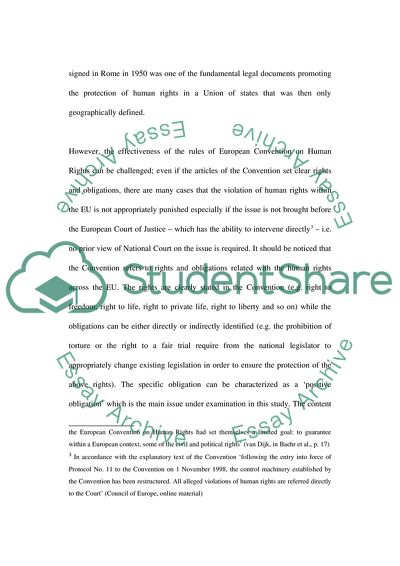Cite this document
(European Convention on Human Rights Essay Example | Topics and Well Written Essays - 4000 words, n.d.)
European Convention on Human Rights Essay Example | Topics and Well Written Essays - 4000 words. Retrieved from https://studentshare.org/law/1719457-analyse-critically-the-evolution-of-the-idea-of-positive-obligations-under-the-european-convention-on-human-rights-using-examples-from-the-case-law-of-the-european-court-of-human-rights
European Convention on Human Rights Essay Example | Topics and Well Written Essays - 4000 words. Retrieved from https://studentshare.org/law/1719457-analyse-critically-the-evolution-of-the-idea-of-positive-obligations-under-the-european-convention-on-human-rights-using-examples-from-the-case-law-of-the-european-court-of-human-rights
(European Convention on Human Rights Essay Example | Topics and Well Written Essays - 4000 Words)
European Convention on Human Rights Essay Example | Topics and Well Written Essays - 4000 Words. https://studentshare.org/law/1719457-analyse-critically-the-evolution-of-the-idea-of-positive-obligations-under-the-european-convention-on-human-rights-using-examples-from-the-case-law-of-the-european-court-of-human-rights.
European Convention on Human Rights Essay Example | Topics and Well Written Essays - 4000 Words. https://studentshare.org/law/1719457-analyse-critically-the-evolution-of-the-idea-of-positive-obligations-under-the-european-convention-on-human-rights-using-examples-from-the-case-law-of-the-european-court-of-human-rights.
“European Convention on Human Rights Essay Example | Topics and Well Written Essays - 4000 Words”, n.d. https://studentshare.org/law/1719457-analyse-critically-the-evolution-of-the-idea-of-positive-obligations-under-the-european-convention-on-human-rights-using-examples-from-the-case-law-of-the-european-court-of-human-rights.


